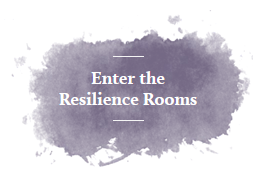From as early as September, I became flooded with adolescents and teens expressing worry and fear regarding Halloween drawing closer. I surveyed 45 teens regarding their experience during Halloween. My research enabled me to better understand the social considerations and ramifications of this holiday and the role that parents directly contribute to it.
What makes this holiday distinct is that it’s the only holiday where socializing with peers, as opposed to family, is so formative. It makes for some complicated social dynamics among peers. There’s an investment by kids, parents, and vendors in keeping this holiday important, prevalent and opportunistic. Costumes and accessories are trendy. The more creative and unique the costumes are, the more notoriety for the friend group.
A majority of parents and teens reported that it tends to be celebrated in groups during middle school and high school. By the middle to end of high school, teens tend to return to doing individual costumes. Some kids trick or treat, but most tend to “chill” at someone’s house. They especially like the shaving cream activities included in the festivities.
Some kids are left out of the groups, while others aren’t invited to the Halloween parties. Some kids are excluded from both. For those in groups, there tends to be a group theme or the group opts to all wear the same costume. There tends to be intense negotiations regarding the group theme or which costume to wear. Sometimes, the negotiations turn into fierce disagreements which can lead group members to splinter off to form a smaller group, with a different theme or costume.
One parent explained that “There’s usually many texts going back and forth, and typically the queen bee(s) wins out on picking the theme and costumes. You could really get a sense of the power and control in the group.” Another parent explained, “I start asking about it really early in the school year to ensure that my daughter doesn’t get left out.”
Another parent gave an example of a situation she found herself in which left her feeling leery of participating in the festivities in the future. She recalled when her son was in middle school, a kid was having a party, and the parent of that child put a cap on the number of kids that could attend the party. Ostensibly, many kids were not invited to it.
Feeling bad that kids were left out, the parent decided to throw a party as well, and decided to open it up to the whole class. Following this, she received calls and e-mails from many parents blaming her for putting kids in the uncomfortable position of having to decide which party to attend. She said she was aghast at the response, as she expected that her gesture would be appreciated for being inclusive of all kids.
Several teens expressed distress over the type of costume to wear. One teen expressed, “It’s usually about, the sexier the costume the better. Not everyone can get away with wearing these.” Another teen remarked, “Everyone could wear whatever they want, I can’t, but I do anyway. I don’t want to stick out and explain why I’m not going along.”
Some teens highlighted the role of parents in inciting the frenzy. One teen expressed, “My mom brings up the groups, even before my friends do. She always wants to make sure I’m included. She’s way too intense.” Other teens commented on their parents, and primarily their mothers, reacting anxiously to the group formation, the type and quality of costumes, and coordinating the parties and events for the evening.
It was apparent from speaking to teens that the anxiety is evoked mostly by females. They noted feeling more pressure to look their best and secure their social status. Males were more concerned about being included in the groups and parties, rather than their selection of costume. Most reported their costumes were inconsequential and many decided on what to wear the night before Halloween.
The teens surveyed were primarily from mid to high socioeconomic families who lived in the suburbs of New York City. Teens from different geographical areas and socioeconomic status levels may have varied experiences and should also be studied.
In order for parents to help their teen through this process, they may opt to:
- Be more self-aware of their own anxieties so that it doesn’t impinge on their children and that they are better able to behave mindfully through the process,
- Present as emotionally supportive of their children who are not invited to be part of a group (i.e., actively listen and attune to their feelings, problem solve through alternative plans, etc.),
- Coordinate parties that are inclusive (e.g., partner up with other parents and have a joint party),
- Teach their children effective communication skills (i.e., the art of negotiating, assertiveness vs. aggressiveness, etc.),
- Discuss body awareness and personal integrity, and
- Consider how to celebrate the holiday so it can have personal meaning and purposefulness (e.g., donate the candy, dress up in representation of a given cause that is meaningful to them, etc.).
Although not fail-safe, parents may be directly able to help to minimize the anxiety and drama that typically surround our teenagers. Noticeably, they have more than enough to contend with.




